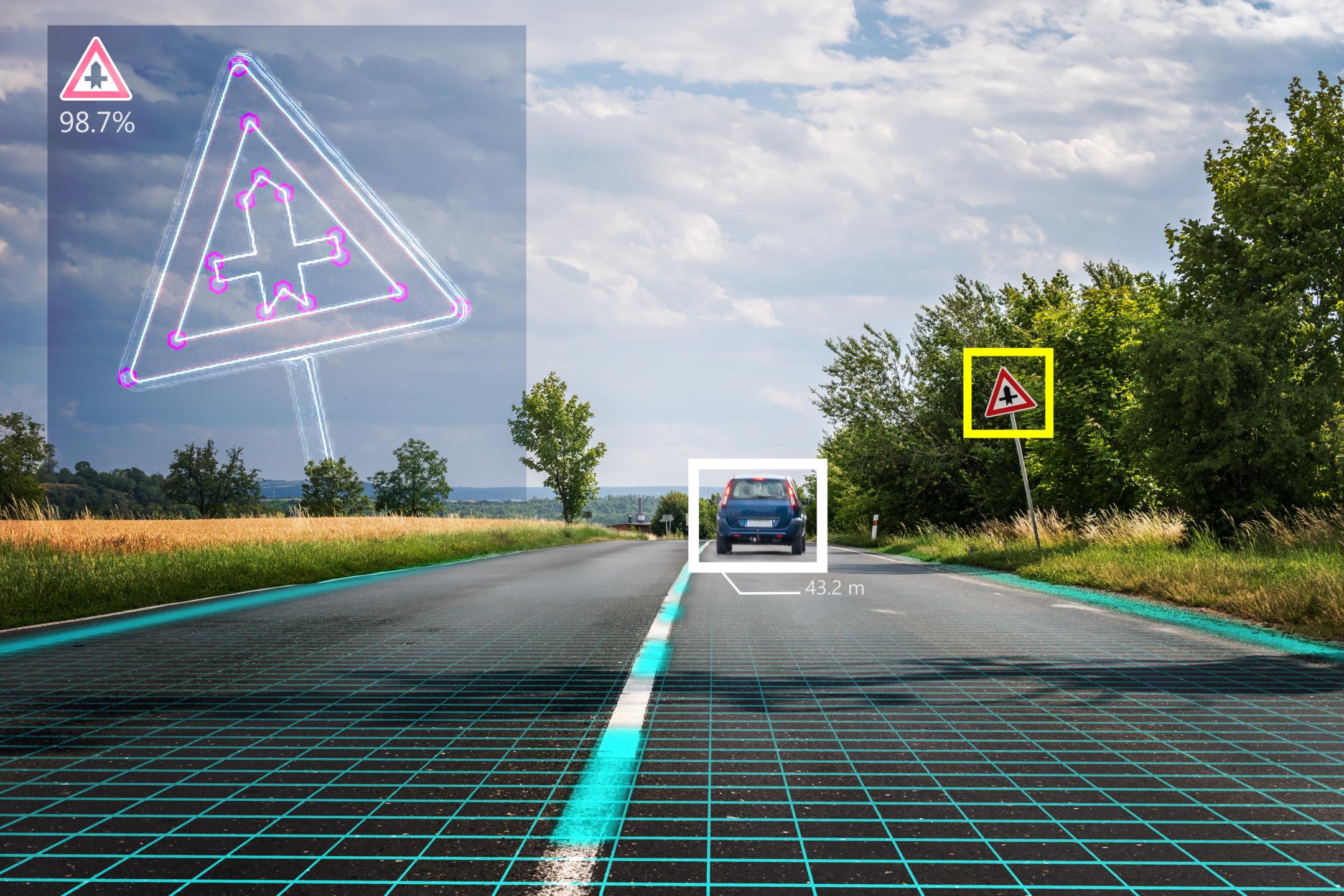
From facial recognition to automated driving — computer vision is a growing industry with lots of opportunities for people trained in computer science, robotics, or machine learning.
Whether you’re a recent college graduate, still in university or a self-studied newcomer, a computer vision internship represents a wonderful opportunity to learn more about the field. We’ll give you some tips on what to expect, and what you can do to get the most out of the experience.
What is Computer Vision?
The discipline of computer vision teaches machines how to process visual information in ways similar to how a human would. In the digital world, this basically means detecting things of a specific class (e.g., human faces or obstacles on the street) on images and videos, before classifying them. As an example, you’ll want your driverless car to distinguish a fire hydrant from a medium-sized dog.
What are Some Computer Vision Applications?
We’ve already mentioned some applications. Facial detection is widely employed in many areas, from device authentication to the supervision of citizens in public spaces. Automated driving is really a specific application of object detection and recognition. We can see variants of this technology in many other areas, from augmented reality in computer games, to the automatic detection of skin cancer.
How Can You Benefit From a Computer Vision Internship?
If you’ve completed a degree in machine learning, chances are that you know a lot about implementing computer vision systems. However, using this knowledge in a business environment might differ dramatically from what you’ve been taught in school. An internship is a great opportunity to put theory into practice.
Additionally, it allows you to get a sense of a company’s culture and get to know its employees (and vice versa) before committing to a full-time position.
What Skills Should You Bring to A Computer Vision Internship?
When reading internship advertisements on platforms like Indeed or LinkedIn, the requirements listed can sometimes seem intimidating and, frankly, over-the-top. It might serve you well to remind yourself that the perfect candidate doesn’t exist.
Some companies have understood this and now push a “cultural fit” approach, encouraging candidates to apply for a position even if they don’t meet all the requirements — but subscribe to the company’s vision. With that said, we’ll list a few skills that will probably serve you in any internship in the field of computer vision.
Hard Skills
Programming
It’s no surprise that programming skills are a must. While most industry-level computer vision applications are written in C++ or Python, many other languages have libraries for implementing computer vision systems, too. Since writing collaborative, industry-ready code is very different from working on your own projects, you might want to acquaint yourself with your language’s community standards, such as PEP 8 for Python or Bjarne Stroustup’s C++ Style Guide.
Deep Learning
Nowadays, there’s no getting around deep learning in computer vision applications. The results that deep neural networks have achieved over the past few years simply cannot be ignored. For image recognition, look into convolutional neural networks (CNNs) that were developed specifically to deal with multidimensional grid-like input (such as color photographs).
In addition to knowing about the basic building blocks of a neural network, you should be familiar with some of the algorithms and datasets used to train them. For instance, look into the state-of-the-art computer vision algorithm YOLOv3, or acquaint yourself with some of the largest open-source datasets for facial recognition and object detection. However, keep in mind that datasets and algorithms are human-made and therefore prone to error and bias.
Cloud-Based APIs
Instead of implementing computer vision models from scratch and training them with their own data, many companies now resort to using the cloud-based APIs provided by some of the biggest players in the area of computer vision — Google, Facebook and the like. They offer pretrained, industry-standard models and datasets, which companies may customize to their own needs.
While it’s unreasonable to expect aspiring interns to be proficient in these technologies, it’s important that you know about them and are prepared to learn about the highly optimized processes of model training, which often look very different from processes for implementing a network on your own machine. Learn more about using APIs for computer vision in our blog post.
Domain Knowledge (optional)
Some machine learning engineers assume that — since every task is internally reduced to numbers — all machine learning problems are essentially the same. This is actually very far from the truth. To build smart machine learning models, it’s crucial to have some knowledge in the domain you’re working with.
Therefore, if you have some unusual knowledge in an area that your company specializes in, for example, deep knowledge of logistical chains for a shipping company, make sure to emphasize that on your resume.
Soft Skills
You might be a highly skilled mathematician who can build complex neural networks from scratch, but all that might not be enough if you don’t know how to interact in a team setting. To really benefit from your internship, you should approach it with curiosity and openness. You’ll get to know and work with new people (and very closely during pair programming sessions, which are a great way to hone your coding skills).
In addition to being open to learn, you should be happy to share your own knowledge and not be afraid of making mistakes, even if they can be embarrassing.
Asking many questions will show that you’re interested in your work and will allow you to understand a problem before tackling it. If your new coworkers value communication skills as much as you do, they’ll let you know when they’re open to chat.
Lastly, use your internship to learn more about the company as a whole, and interact with people from other departments. It will give you new perspectives, and allow you to make an informed decision in case you’re offered a position once your internship ends.
What Can a Computer Vision Internship Teach You?
The transition from a sheltered university environment to a company with streamlined processes and tight deadlines can be bumpy. An internship is a nice opportunity to adapt to the real-world environment of a workplace without the burden of huge responsibility.
Similarly, when building machine learning models in a learning context, datasets are often suspiciously clean and orderly. In the real world, most of the data you’ll get your hands on will be imperfect and full of missing values, wrong entries, and skewed distributions. It’s better to get used to this messy reality sooner rather than later.
Finally, an internship is a great way to experience the advantages and downsides of working in a team. When applying, seek out diverse teams — these contexts will teach you to communicate and work together with many different people, making the experience all the more rewarding for you.
What to Keep in Mind During Your Internship
Just as the company will have expectations you’ll have to meet, you also can expect some things from your internship, and you should be clear about them — internally and to others. Perhaps you want to learn a specific skill; maybe you’d like to combine your internship with a personal project, such as a thesis.
In any case, you should expect guidance to help you learn and grow. The company should be specific about their expectations for you, and offer opportunities for questions and feedback on your work. Your manager will most likely set up a kickoff meeting with you at the start of your internship to set goals, agree on ways to track progress, and share their preferred ways of communicating. If you feel like you are not getting as much feedback as you need to be learning, don’t be shy to ask your manager or your teammates.
Conclusion
In this article, we looked at the benefits you might get from a computer vision internship. We touched on what you should bring to the table, and offered some advice on what you should expect from your company. Are you ready to get started in computer vision? Enroll now in our Nanodegree.



